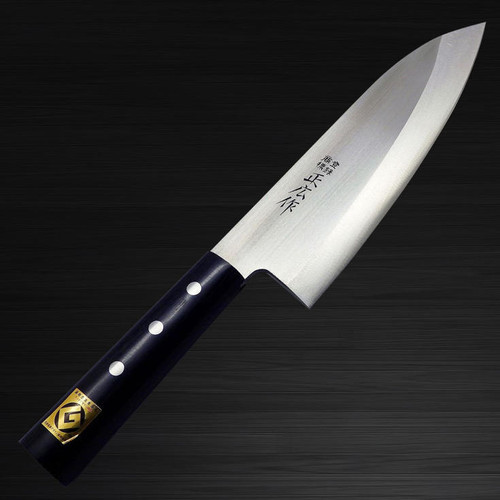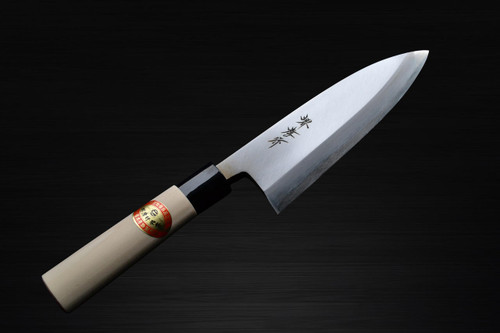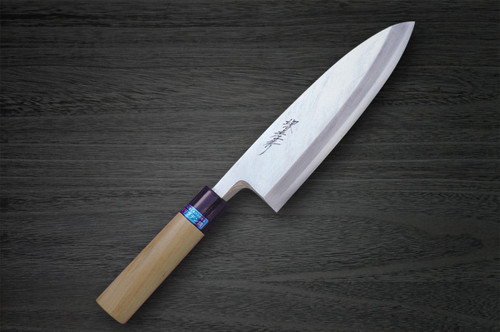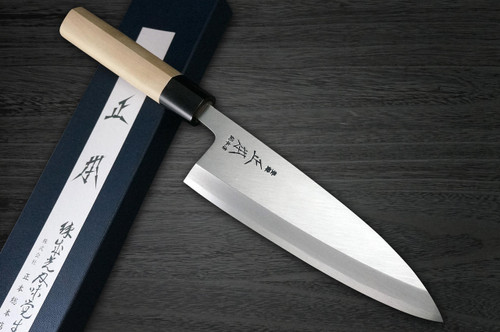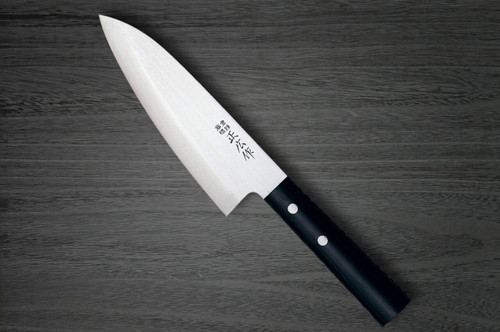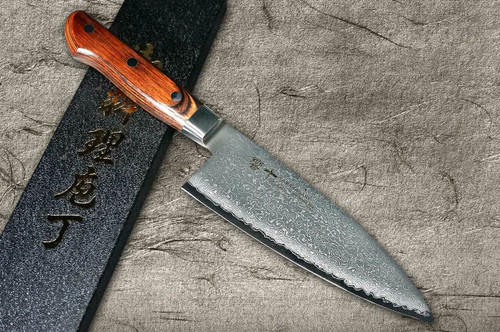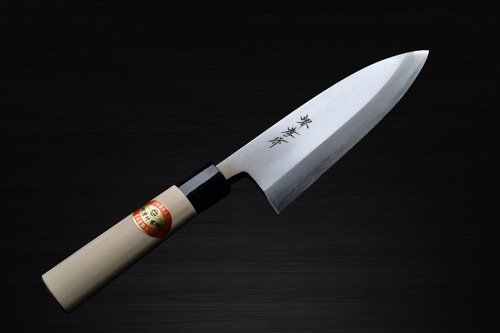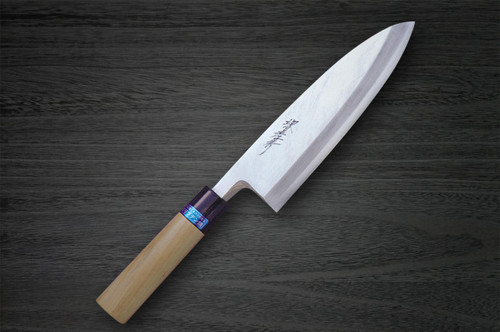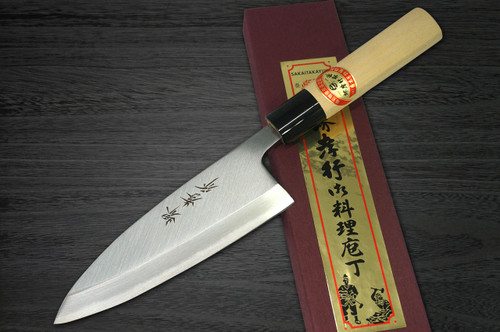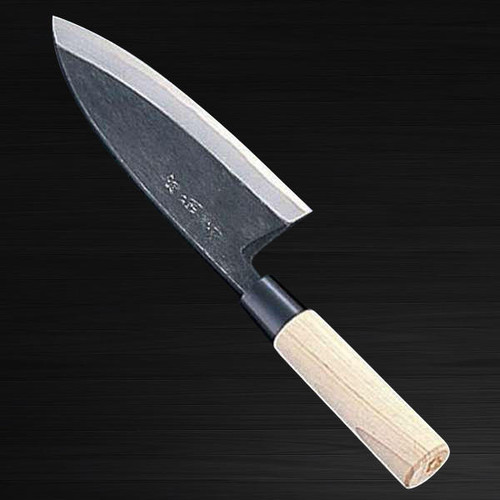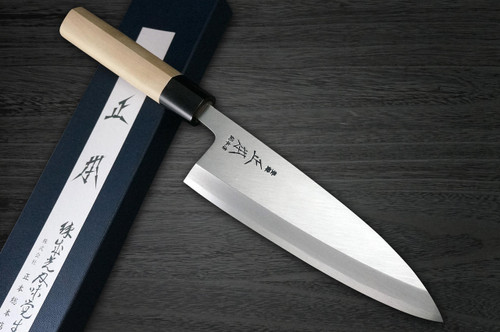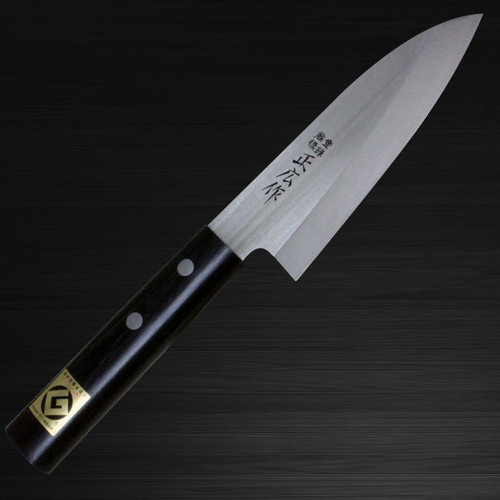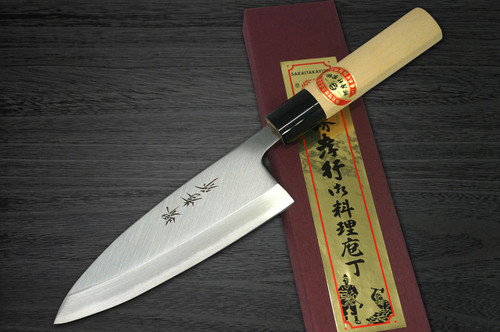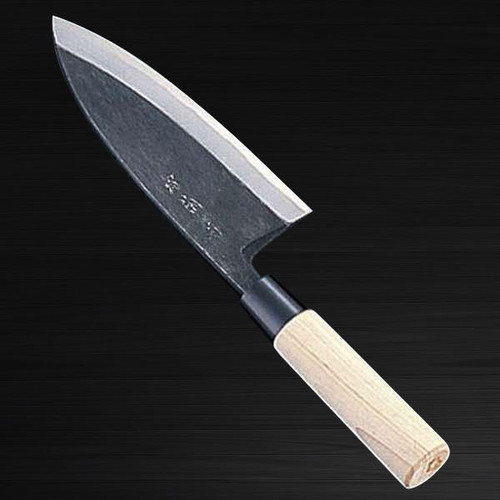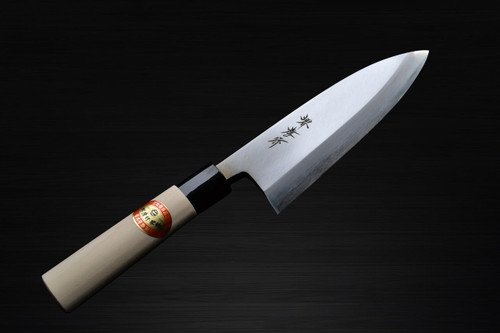Deba knife Selections
Top 5 Recommended Deba Knives and Tips for Choosing Without Regret
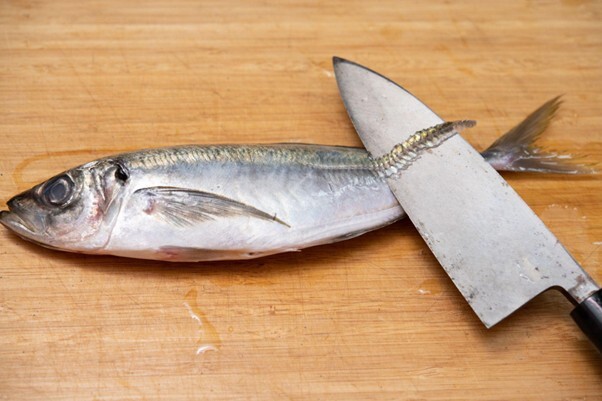
"Which Deba Knife Should I Choose?"
"Using and maintaining a deba knife seems complicated…"
Do you have these concerns?
A deba knife helps you beautifully fillet fish. By learning how to choose the right one and use it correctly, you can enjoy professional-quality fish dishes at home.
This article explains how to choose, use, and maintain a deba knife for those considering purchasing one.
Please read to the end for beginner-friendly information and recommended products.
What is a Deba Knife?
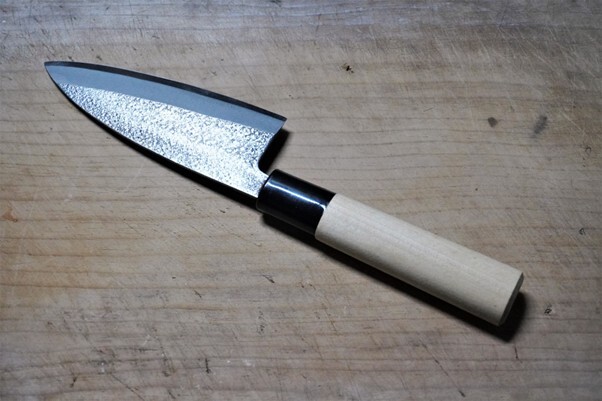
A Deba knife is a traditional Japanese knife specifically designed for filleting fish.
The reason the Deba knife is ideal for fish preparation lies in its unique construction.
- Its thick blade can cut through bones
- Its single-beveled edge allows for clean, beautiful cuts through fish flesh
- Its substantial weight allows for easy application of force
The most significant features of the Deba knife are its thick blade and single-bevel design. The thick blade reliably cuts through fish bones and tough parts. The single-bevel allows the blade to smoothly slice between the fish flesh and bones.
Compared to a standard santoku knife, the deba knife is heavier and has a wider blade. This weight allows for efficient fish preparation with less effort, making it an indispensable knife for those who frequently cook fish.
How to Choose a Deba Knife
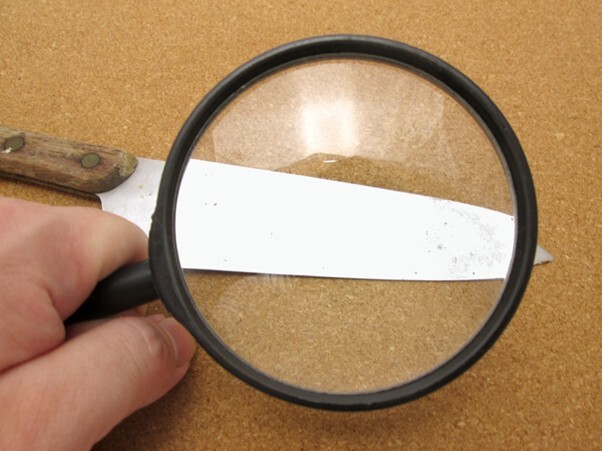
When selecting a Deba knife, it's crucial to confirm the intended use and specifications that suit you.
There are five main points to consider:
- Left-handed vs. Right-handed Models
- Size (Blade Length) Suited to Your Purpose
- Material Differences (Carbon Steel, Stainless Steel, Composite Materials)
- Single-edged or double-edged construction
- Handle type and grip comfort
Understanding these points will help you choose a deba knife you can cherish for years to come.
Differences between left-handed and right-handed models
Deba knives must be selected according to your dominant hand.
Since most deba knives feature a single-bevel structure, the blade angle differs between right-handed and left-handed models. If a left-handed person uses a right-handed knife, the blade will point away from the food, making cutting difficult.
Left-handed individuals should always choose a left-handed deba knife. However, double-edged deba knives can be used regardless of handedness. It is crucial to confirm the handedness compatibility before purchasing.
Choose the size (blade length) suited to your purpose
Select the size of your deba knife based on the size of the fish you will be preparing.
| Blade Length | Suitable Fish Size | Purpose |
|---|---|---|
| 10.5–12 cm | Small fish (horse mackerel, sardines, etc.) | Home processing of small fish |
| 15–16.5 cm | Medium fish (mackerel, sea bream, etc.) | General household size |
| 18–21 cm | Large fish (yellowtail, tuna, etc.) | Commercial use / Large fish only |
The most convenient size for home use is the medium size of 15–16.5 cm. This size handles most fish well and is easy to maneuver. For small fish only, a small deboning knife under 12 cm is convenient.
Choosing by Material (Steel, Stainless Steel, Composite)
The material of a deba knife significantly affects its sharpness and ease of maintenance.
| Material | Sharpness | Susceptibility to Rust | Maintenance | Price |
|---|---|---|---|---|
| Steel | Very good | Prone to rust | Difficult | Expensive |
| Stainless steel | Good | Resistant to rust | Easy | Cheap |
| Composite | Good | Rust-resistant | Average | Moderate |
Stainless steel is recommended for beginners. It resists rust, is easy to maintain, and provides sufficient sharpness. Those prioritizing sharpness should choose steel, while those seeking balance should opt for composite materials.
Choosing Single-Edged or Double-Edged
Single-edged deba knives are common, but double-edged types also exist.
Single-edged deba knives specialize in beautifully filleting fish. With only one side sharpened, the blade can be precisely inserted between the flesh and bones.
Bilateral types, on the other hand, can be used by both left- and right-handed individuals and are also effective for cutting vegetables.
Choose a single-edged knife if you intend to use it exclusively for fish, or a double-edged knife if you prioritize versatility. However, the single-edged knife offers superior performance as a traditional deba knife.
Choose based on handle type and grip comfort
The handle's material and shape directly impact ease of use and safety.
Wooden handles fit comfortably in the hand and are slip-resistant. Magnolia and cypress wood are particularly resistant to water and can be used for a long time. Resin handles are hygienic and easy to maintain. All-stainless steel types are seamless and the most hygienic, but can sometimes be slippery.
Choosing a handle thickness and length that fits your hand size is crucial. Try holding it to ensure you can grip it firmly.
Top-Selling Deba Knives

Here is a ranking of the best-selling Deba knives on our site.
Popular Deba knives share five main characteristics.
- 1st : Masahiro Stainless Steel Japanese-Style Deba Knife 180mm
- 2nd : Shikisai MIYAKO 33-Layer Damascus Deba Knife 165mm
- 3rd : Sakai Takayuki Kasumi-toji (White Steel) Deba Knife 165mm
- 4th : GLESTAIN "W" MV Stainless Deba Knife 160mm
- 5th : Kanetsune KC-950 Mini Deba Knife 105mm
We'll explain each one's features and reasons for popularity in detail.
1st : Masahiro Stainless Steel Japanese-Style Deba Knife 180mm
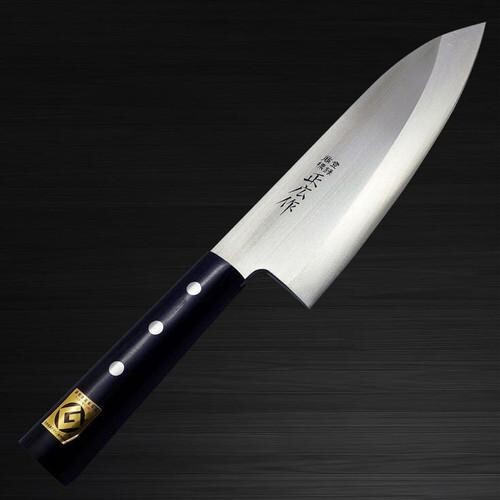
A deba knife offering professional-grade quality at an affordable price for home use.
Made with Masahiro's proprietary stainless steel from this long-established Seki City manufacturer. The handle incorporates an antibacterial agent for hygiene. Its 180mm blade length handles large fish, offering excellent balance between quality and price.
Recommended for:
- Those prioritizing cost performance
- Those who want to handle large fish
- Those seeking professional-grade quality for home use
Product Page: HOCHO KNIFE|Masahiro Stainless Steel Japanese-Style Chef's Deba Knife 180mm
2nd : Shikisai MIYAKO 33-Layer Damascus Deba Knife 165mm
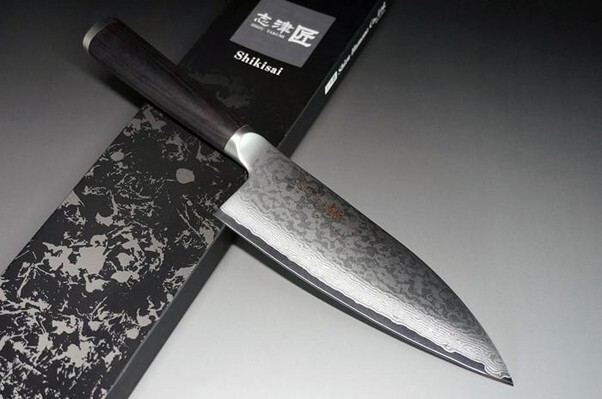
A premium deba knife combining beautiful Damascus patterns with exceptional sharpness.
Crafted with 33-layer Damascus steel and AUS8 steel core, it is finished by hand by skilled artisans in Seki. The mirror-polished surface with a matte finish emits a beautiful luster. Its unique R-shaped handle ensures a comfortable grip.
Recommended for:
- Those who value aesthetic beauty
- Those seeking a gift
- Those with a preference for high-end quality
- Those seeking a beautiful knife
Product Page: HOCHO KNIFE|Shikisai MIYAKO 33-Layer Damascus (AUS8) Japanese Chef's Knife Deba Knife 165mm
3rd : Sakai Takayuki Kasumi-toji (White Steel) Deba Knife 165mm
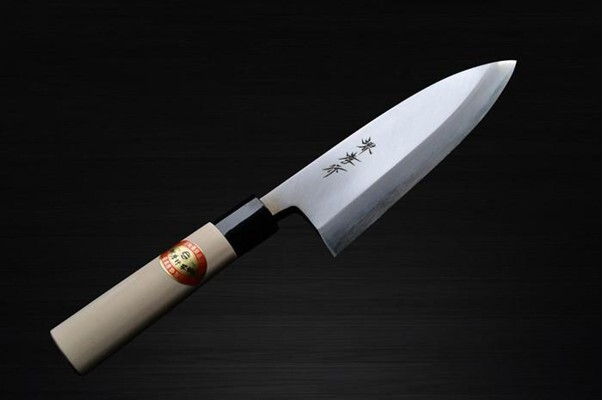
This is an authentic deba knife crafted from traditional Japanese steel.
Forged using traditional methods with Yasugi Shirogami No. 3 steel as the core material. Delivers exceptionally sharp cutting performance and excellent edge retention, allowing long-term use with sharpening. Features a comfortable grip with a magnolia wood handle.
Recommended for:
- Those seeking an authentic Japanese knife
- Those who value tradition
- Those who enjoy maintaining their knives
- Those seeking a lifetime companion
Product Page: HOCHO KNIFE|Sakai Takayuki Kasumi-toji (Shirōgane) Japanese Knife Deba Knife 165mm
4th : GLESTAIN "W" MV Stainless Deba Knife 160mm
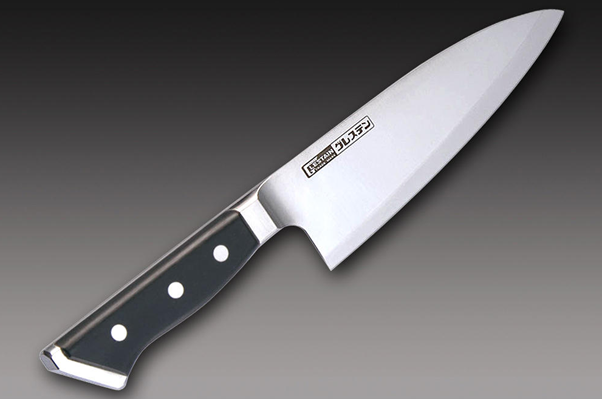
The blade is constructed of Glestain's original Acuto steel(440A), which undergoes a sub-zero manufacturing process that ensures a very hard and durable edge. Each Glestain knife comes with a balanced, water resistant hardwood handle fastened with stainless-steel rivets.
Recommended for:
- Those prioritizing easy maintenance
- Those seeking stainless steel
- Those wanting to reduce maintenance effort
Product Page: HOCHO KNIFE|GLESTAIN "W" MV Stainless Japanese Chef's Deba Knife 160mm
5th : Kanetsune KC-950 Mini Deba Knife 105mm
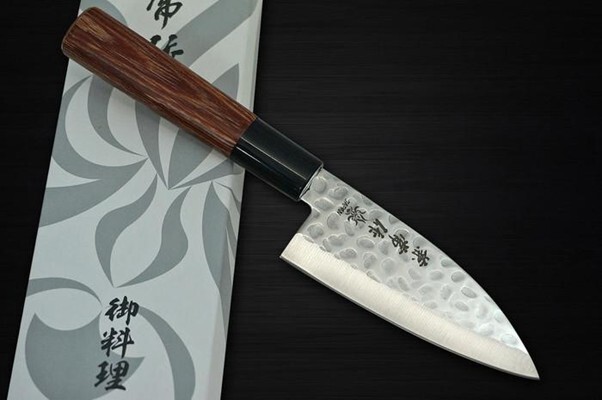
A lightweight, compact deba knife ideal for processing small fish.
Made from DSR-1K6 high-carbon stainless steel, it features a beautiful hammered finish. Weighing just 65g, it's easy for women to handle and popular as a dedicated small fish knife. Its compact size saves storage space.
Recommended for:
- Those who frequently handle small fish
- Beginners to deba knives or women
- Those seeking a compact knife
Product Page: HOCHO KNIFE|Kanetsune KC-950 DSR-1K6 Stainless Steel Hammered Pattern Wagyu Mini Deba Knife 105mm
Tips for Using a Deba Knife
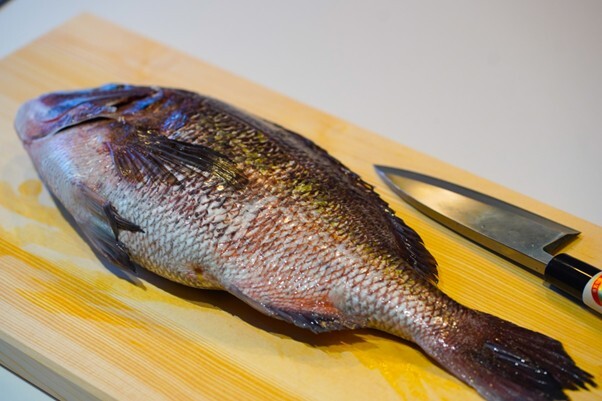
The Deba knife is a specialized knife designed for efficiently processing fish.
Knowing the correct way to use it allows you to safely and beautifully fillet fish.
- Removing the fish head
- Removing the Innards
- Fillet into three pieces
- Cutting through the bones
By following these basic steps in order, you can process fish efficiently without waste.
Cutting off the fish head
When cutting off the fish's head with a deba knife, the key is to insert the blade into the joint between the bones.
Aim for the joint behind the pectoral fin, insert the tip of the blade, and use the weight of the knife to push down and cut through. Cutting through the joint avoids the hard bone, allowing you to cut it off efficiently with minimal effort.
Remove the innards
Use the tip of the deba knife to carefully remove the innards.
Make a shallow cut into the fish's belly and slit it open from the anus toward the head. Use only the tip of the blade and proceed carefully to avoid damaging the organs. Once the organs are visible, remove them by hand and rinse the abdominal cavity with water.
Fillet into Three Pieces
Fillet cutting is a technique that maximizes the single-edged structure of the deba knife.
Insert the blade along the backbone from the back side, then make a similar cut from the belly side. Finally, lay the blade flat from the tail end and slide it along the backbone to separate the flesh. The single-edged blade allows precise cutting along the bone.
Cutting through bones
The deba knife is specifically designed for cutting fish bones.
When cutting through the backbone or thick bones, use the heel of the blade. Place the blade perpendicular to the bone and use the weight of the knife to cut through in one swift motion. For smaller bones, the middle section of the blade is sufficient for cutting.
Sharpening and Maintenance Methods for the Deba Knife
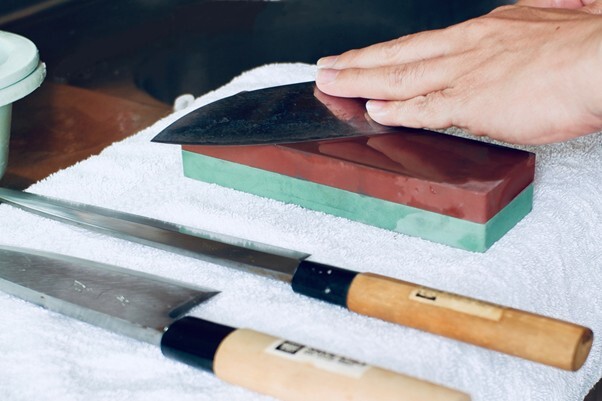
Maintaining the sharpness of a Deba knife requires proper sharpening and care.
Because the Deba knife has a single-bevel structure, it requires a different sharpening method than standard knives.
- STEP1: Types of Whetstones and How to Choose
- STEP2: Preparing and Safety Checks Before Sharpening
- STEP3: Basic Sharpening Technique for Single-Bevel Knives
- STEP4: Deburring the Back Edge and Finishing
- STEP5: Storage After Use
Following these steps correctly will help maintain the sharp cutting edge of your deba knife for a long time.
STEP1: Types of Whetstones and How to Choose
Selecting the appropriate whetstone for the purpose is crucial when sharpening a deba knife.
Whetstones are classified by coarseness into coarse stones (#220-#400), medium stones (#800-#1200), and finishing stones (#3000-#8000). If the blade is chipped, start with a coarse stone; for regular maintenance, a medium stone is sufficient. Finishing stones are used for mirror finishes and enhancing the final sharpness.
For beginners, a medium-grade stone around #1000 is recommended. This single stone handles basic sharpening tasks and offers manageable coarseness. While both natural and synthetic stones exist, synthetic stones provide a more consistent sharpening feel.
STEP 2: Preparation and Safety Checks Before Sharpening
Properly preparing the whetstone and work environment ensures safe and effective sharpening.
Soak the whetstone in water for 10-15 minutes before use, ensuring it is fully saturated until no more bubbles appear. Secure it firmly on a whetstone stand or damp towel, taking care to prevent slipping. Ensure your workspace is well-lit and free of obstacles.
Since you're handling blades, it's crucial to create an environment where you can concentrate. Keep children and pets away, and ensure footing safety with a non-slip mat or similar.
STEP 3: Basic Sharpening Method for Single-Edged Knives
The key to sharpening a single-edged deba knife is maintaining a consistent blade angle throughout.
Place the knife blade against the whetstone at a 15-20 degree angle and slide it with consistent pressure from the heel to the tip. Since it's a single-edged blade, only the cutting surface is sharpened. After sharpening about 10-20 times, rinse off the grinding residue with water and check the blade's condition.
Imagine gliding the blade over the stone without applying excessive force. Maintaining a consistent angle is crucial, as deviation will dull the edge. Using an angle guide is recommended until you become accustomed to the process.
STEP 4: Deburring the Back and Finishing
Remove burrs created during sharpening from the back surface to complete the edge.
After sharpening the front edge, place the back edge (flat surface) parallel to the whetstone to remove burrs. Lightly sliding it 2-3 times is sufficient. Finally, lightly stroke the tip with newspaper or cloth to completely remove any remaining burrs.
Deburring is a critical step directly affecting sharpness. Avoid over-grinding the back surface, as this alters the blade shape; keep this step minimal. Check the finish by shining light on the edge tip; the absence of reflection confirms it's smooth.
STEP 5: Post-Use Storage
To prolong the life of your deba knife, proper care and storage after use are essential.
After use, wash with a neutral detergent and wipe off all moisture thoroughly. Pay special attention to the area where the blade meets the handle, as moisture tends to linger there; dry it carefully. After air-drying in a well-ventilated area, apply a thin layer of salad oil to the blade to prevent rust.
For storage, use a blade guard or knife stand to protect the blade. Avoid contact with other metals and choose a low-humidity location. Steel deba knives are particularly prone to rust, so make a habit of applying oil regularly.







